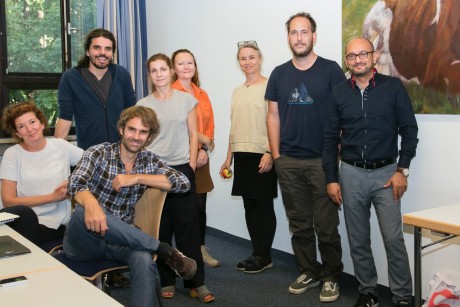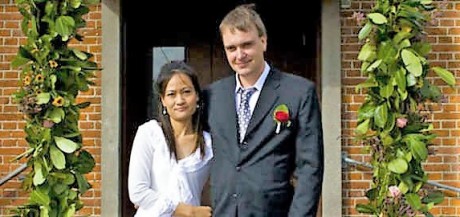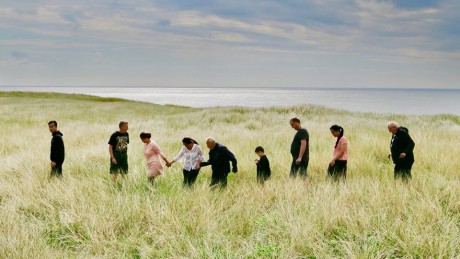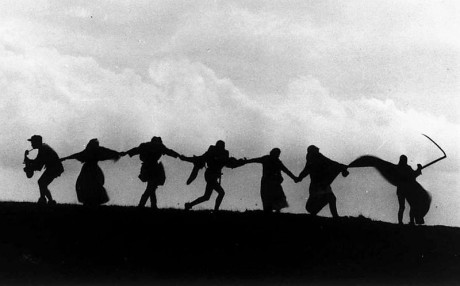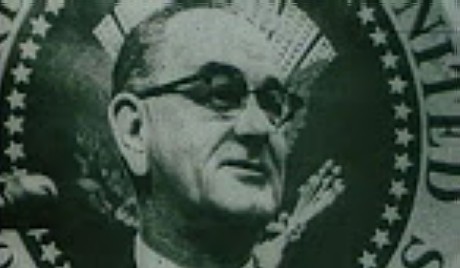


Hampus Linder: Feministen
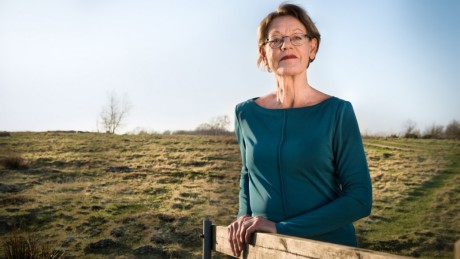
Politik er så forsigtig og strømlinet i dag, og Gudrun Schyman skiller sig ud. Hun er helt åben om, at hun har lavet fejl, hvilket gør hende til et menneske…
TV-KUNST
Jeg ser Hampus Linders biografiske film om den svenske politiker som et tv-program, ja, det fremtræder det faktisk som, det vil det være et interessant og seværdigt program med en kamerastil i fortællelagets reportage som i internationale tv-dokumentarer, altså ændret, distanceret siden den nærværende og intenst observerende kamerabrug fra helt tilbage til Richard Leacock mere og mere er forsvundet fra nye og unge produktioner (dog endnu bevaret hos få gamle mestre) uden egentlig at blive erstattet af en ny tv-kunst holdning. I dokumentarfilmene er samtidig dette klassiske direct cinema mere og mere afløst af et filmfotografi som henter sin erfaring fra spillefilmens omhyggeligt komponerede billede og lange forløb af arrangerede og instruerede scener. Og det derimod med en lige så omfattende filmkunstnerisk fordybelse, som jeg venter af spillefilmene.
Begge disse greb har Hampus Linder givet sig i kast med i sit arbejde med Schymanbiografien og for mig at se i kast med at definere en nutidig tv-kunst. Men jeg synes ikke det rigtigt helt er lykkedes, der er hverken spillefilmens myndige ro eller det gamle observerende kameras nærvær, dristighed, opdagelsestrang og iagttagelsesivers udvidelser af indsigten. Jeg mærker det især i reportageoptagelserne fra de mange politiske møder og demonstrationer.
Nogle scener lykkes for mig at se meget bedre i deres anderledes koncentrerede gammeldags filmambition: scenen med Gudrun Schyman og datteren i en tilbageskuende samtale, som Hampus Linder selv har fotograferet og scenerne med hendes tidligere mand, filminstruktøren Lars Westman, som er fine og tydelige klip fra to af hans film fra 1990-erne i en noget dristigere æstetik. De scener griber for alvor ned i mine følelser og rører ved smertende, men ellers ofte fortrængte erindringer. Her er Hampus Linder i sin professionelt seriøse TV-kunst ganske nær Lasse Wästmans personligt åbne filmkunst, som så smukt svarer til Gudrun Schymans undersøgelser og formuleringer, hendes enestående politiske arbejde.
MIKROPORT
Hampus Linder vil i sin nye filmambition, som vil aktualitet og samfundsdebat, bevare den gamle ambition om fordybelse, han skriver: ”Jeg mødte Gudrun Schyman, da jeg filmede hende under valgkampen i 2014, og der fødtes idéen om at lave en hel film om hende. Gudrun sagde ja til det, ’så længe du ikke er i vejen’. Det fortrolighedsforhold og den åbenhed, vi har fået fra Gudrun, har overrasket mig. Vi har fået lov til at være med hende på job, på rejser og privat. Jeg satte en trådløs mikrofon på hende om morgenen, og så glemte hun i princippet alt om mig. Jeg synes, Gudrun er en spændende karakter. Politik er så forsigtig og strømlinet i dag, og Gudrun skiller sig ud. Hun er helt åben om, at hun har lavet fejl, hvilket gør hende til et menneske og ikke en maskine. Under arbejdet med filmen ville jeg forstå, hvad der har formet og driver en person som Gudrun Schyman.”
Netop på denne glemte mikrofons indsigt bygger den usædvanlige kvinde sin gennemførte monolog, ofte i dialogform, men det er kun hende jeg hører, for her findes sammenhængen, så mit indtryk fæstnes ved noget overmåde værdifuldt og uforglemmekigt: hvilket flot og klogt og smukt menneske! Hvilken vidunderlig politisk sammenhængskraft og overbevisende nydannende styrke i en slags poetisk verdensanskuelse. Her er filmens egentlige fortælling, her er dens berettigelse som vigtigt dokument nu i det aktuelle, men især i den politiske historie langt tilbage, som Gudrun Schyman taler så smukt om, så overbevisende om.
Her er filmens alternative fortælling, her den dens berettigelse som uomgængeligt dokument at bevare i samme historie som kildeskrift, og her er dens værdi og egentlige aktualitet i de store politiske valg, udsatte menneskers flugt fra den rige verdens krige, kvinders oprør mod de dominerende mænds poliiske kultur og emtionelle brutalitet. Jeg ser tv, når jeg ser den her film, godt og seværdigt tv.
Men i det er mødet med Gudrun Schyman vigtigere for mig end filmens redegørelse er. Redegørelsen vil fortone sig i debatten nu, mødet vil fæstne sig i erindringen. Og frem for filmens danske titel Feministen vælger jeg dens originale overskrift Gudrun, ganske enkel og derfor uendelig rig til alle tider.
SYNOPSIS
En film om et feministisk ikon og et på én gang stærkt og skrøbeligt kvindeliv. Gudrun Schyman har ofte befundet sig i stormens øje. I 1993 blev hun partileder for Vänsterpartiet i Sverige, som hun sikrede det bedste valgresultat nogensinde. 10 år senere måtte hun gå af i utide under stor dramatik. Herefter dannede hun Feministisk Initiativ, som startede som en bevægelse og blev et parti, der nu har afdelinger over hele landet, søsterpartier i Danmark, Norge og Finland og en plads i Europa parlamentet.
Schyman er for længst skrevet ind i historiebøgerne og er i dag et ikon for svensk feminisme. Men vejen dertil har ikke bare været lang, men også fuld af alverdens forhindringer, hvor hendes egne dæmoner er nogle af de største. Vi får et indblik i det, der har formet Gudrun Schyman blandt andet en opvækst med en alkoholiseret far og hendes voksende problemer med at få den private person og den offentlige person til at mødes.
Filmen følger hende over 4 år i en periode (2014-2018), hvor fremgangen for Feministisk Initiativ, og Schymans appel bliver en del af det store billede af den kvindebevægelse, der vokser verden over og får sit største udtryk gennem Women’s March og #Metoo. (Lene Pia Madsen i pressematerialet)
http://doxbio.dk/movie-archive/feministen/ (Biografpremiere på onsdag 3. oktober)




